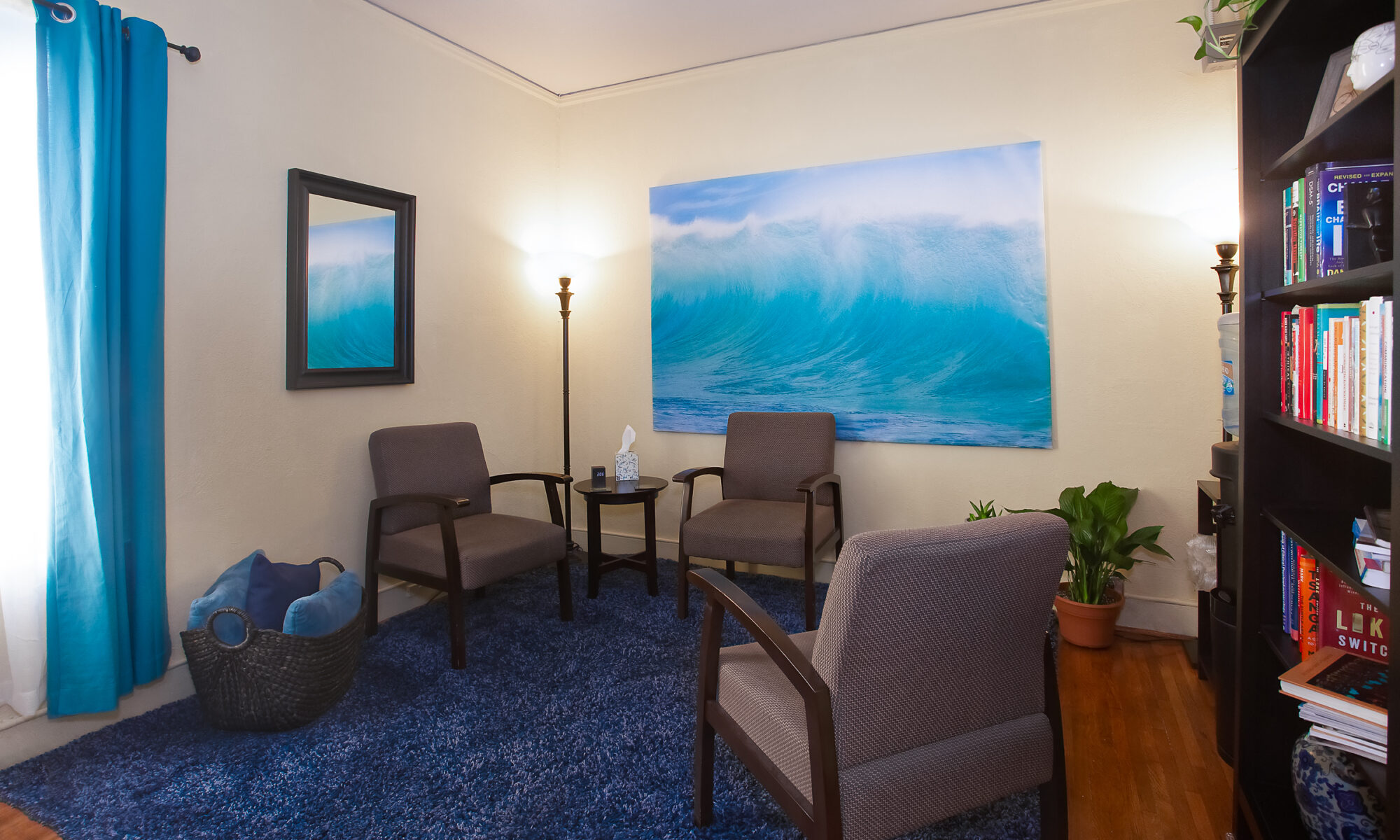
My last article was about how relationships are the hardest thing you will ever do, and I outlined some of the main reasons for this. In this article I want to present the ways couples therapy can help with these difficulties by discussing three possible outcomes of the work. I hope this exploration will demystify some of the “mystery”, helping readers to understand that the success of couples therapy has more to do with the couple seeking it than the therapist administering it. This is not an attempt to make a couple responsible for any failure of couples therapy, but rather to emphasize their role in its success–to up their skin in game, so to speak.
There was a time when couples therapy was seen as the last resort for a broken marriage. Today, there continues to be more of a stigma toward couples work than individual work. Fortunately, that perception is changing over time, with many couples now seeking assistance at the beginning of their relationships, as a way to avoid issues down the road.
However, there continue to be misconceptions about what couples therapy can actually do. What it can’t do is:
- “fix” your relationship
- decide for you if you should stay together or break up (though it may help you to make a decision about this)
- improve the sex (or re-start it) in your relationship if neither partner is willing to make some changes
Simply put, the work of a couples therapist is to help couples have difficult conversations. The main difficult conversations that couples struggle to have often concern sex, money, parenting, and respect. These conversations can be difficult to have because having them requires that we set aside defensiveness and criticism, and examine what we are willing to “give up” so that the relationship, not the individual, can “win”. This can be very challenging if a couple have opposing values in these areas, but it is not impossible!
So let’s look at what can happen when a couple comes into therapy for help with their difficult conversations. What are the possible outcomes?
NOTHING CHANGES: Let’s start with the bad news. Simply put, change requires an action, not just an intention. Many couples truly want their relationships to improve, but then find themselves running into obstacles when they try to change their behavior. Those obstacles can come from inside or outside the individuals in a relationship, and can be so discouraging that the process is stopped before it even gets going.
However, not all is lost when obstacles show up. They can be a sign that something is moving. Obstacles are often negative beliefs that individuals have carried for years, which they have brought into the relationship with them. Negative beliefs are shameful ways of thinking about ourselves that are either handed to us by others, institutions, or culture, or conclusions that we make about ourselves based on how the world responds to us. We are not always aware of them until they show up in relationships or when we are trying to embrace change.
Regardless of why we resist action, without it nothing will change. This is why I want to be sure that a couple is willing to take action before working with them in therapy, because without that willingness, they will be disappointed by the lack of results and take that as a sign the relationship is hopeless and should end.
BREAK-UP OR DIVORCE: While this is an option that many choose without coming into couple therapy, it is still an option even while working together with a therapist on your relationship. However, couples who choose to break-up or divorce after a course of couples therapy are more likely to be doing so for the right reasons, whereas most other couples end their relationships by mistake.
There are two primary reasons that a couple will break-up in the course of doing couples therapy:
- They realize that they no longer (or perhaps never did) have shared values/goals/relationship dreams, making them a poor fit who would be better served moving on from one another.
- They find out that there is no longer any relationship to save.
As their therapist, I never make this decision for them–but I may ask questions about what I observe in the room. It is up to the couple do decide whether they want to stay together or not. One thing I always tell them is a phrase I got from my mentor, Dr. Walter Brakelmanns, who would tell couples “I will fight for your relationship until you give me a good reason not to.”
Many couples break-up because of “incompatibility”. I am here to tell you that this concept is a myth! Incompatibility suggests that differences in interests divide couples, and yet the reality is that many couples have long and happy marriages while having wildly dissimilar interests. Rather, it is a wide difference in values that can signal a mismatch.
Values signify what is important to us, and some examples are: having a family, living near parents, honesty, mutual respect, spirituality, loyalty, trustworthiness. We usually have 3-5 non-flexible values, but even those are subject to change over time, so finding someone whose values match yours is no guarantee for the long run, but it can’t hurt! Values conversations are just one more way of showing interest in your partner’s inner world, and how it may change over time.
Though relationships work best when they share key values, it is not an automatic deal-breaker with they don’t. It all comes down to respect–and the willingness to be curious about each other rather than judgmental or critical. Values can change over time, but that does not mean that a relationship has to end–it can change too.
***
The second reason that couples might break-up in couples therapy is because they come to realize that the relationship is already dead. What lets us know this? Lack of interest.
When I notice that one partner is sharing a painful emotion or event, and I see a lack of empathic response from the other partner, I start to worry about the relationship. Lack of response can show up for many reasons, but if it is happening because the person no longer cares about how their partner is suffering, then the relationship has lost its emotional connection. There is no relationship for me to save. This happens not because one partner is a cold, uncaring person, but because they no longer care about their partner’s inner life. This can happen for a number of reasons, and often happens over a period of time.
This will present as a couple who come in because the relationship is still alive for one, but not for the other. This can be very painful, but it is even more painful to stay in with someone who no longer has interest in you. I think it is easier to survive a break-up than a bad marriage. These couples can still do work in couples therapy, but the focus shifts from connecting them to problem-solving–what do they need to figure out in order to move on from one another?
What makes a relationship lose its connection? Well, the main causes I see are unresolved resentments that have turned into contempt, breaches of trust that are seen as “unforgivable”, lack of mutual respect and understanding, and certainly undiagnosed mental illness, domestic violence, or substance abuse. The loss can occur over a long period of time or in response to a specific breach, but it is up to each individual to choose to work toward reconnection, otherwise the relationship will start to disconnect and die.
Couples therapy can help couples to set aside blame and reflect on the role they each had in their relationship getting to this place, while also helping to create new understanding about each other’s actions, leading to greater understanding. This understanding it the beginning of empathy, rebuilt trust, and reconnection.
DO THE WORK: To round out our exploration of the three outcomes of couples therapy, let’s look at the optimal outcome–doing the work! The reality is that this option is really the only thing that brings about change in a couples relationship. It does not matter how brilliant or skilled the therapist is, if the couple does not take the work home and into their interactions, nothing will change.
So what is the work? Well, in my office I first get the couples’ agreement that I can do my job–which is to guide them to having more successful difficult conversations. Sometimes that means that I need to interrupt what they are trying to say–and that can be a challenge for some. The work in this instant is for the client to regulate themselves and “set aside” whatever feelings are coming up for them in the moment. This is harder than it sounds! But without this willingness, the conversation will be derailed and nothing will change.
Secondly, the couple has to change what they are doing at home. This can entail a whole list of things, or perhaps just a couple adjustments, but without some action towards practicing the skills at home, again, nothing will change. Couples don’t have to turn the whole house upside down–John Gottman says that it is more important that we do “small things often” as a way to keep the engine of relationship connection running on idle, rather than having to restart it each time we need to communicate.
Another action that can help a great deal is when the individuals pursue their own work with an individual therapist. As we reveal the vulnerabilities that each partner brought into the relationship, it is up to each partner to attend to these rather than holding the other responsible for “fixing” them. Individual therapy can be a great adjunct to couples work so that in the couples session, the focus can be on the relationship instead of the individual.
I get some pushback from couples when I tell them that there is work involved in having a healthy relationship. I can understand why. We are raised to believe that love does not take work–that it is some sort of magic glue that sustains itself, and that is absolutely not true unless you are speaking of the love a parent has for a child. Real love take effort to sustain, because it is effort that indicates caring and interest in another, not passivity. Real love is a verb, not a noun! It is caring in action. And when couples embrace that framing of effort, they see it as a romantic gesture rather than an obligation or duty.
The bottom line is that it works. So do the work!
***
Anytime a person wants to improve or change their life, some action and effort is required, even if that action or effort is to do less. And for those who do not know what actions to take, it is considered wise to seek out an expert for guidance and support. This is what a couples therapist can offer, but a good therapist will also assess whether or not a couple is ready and willing to do the work, in the same way a personal trainer will evaluate your commitment to an exercise program.
Therapists can guide your progress, but the couple has to start the engine, and this is why I present these three choices to every couple that comes into my office–I want to invite them to work as hard as I will to improve their relationship.
Which choice will you choose?




